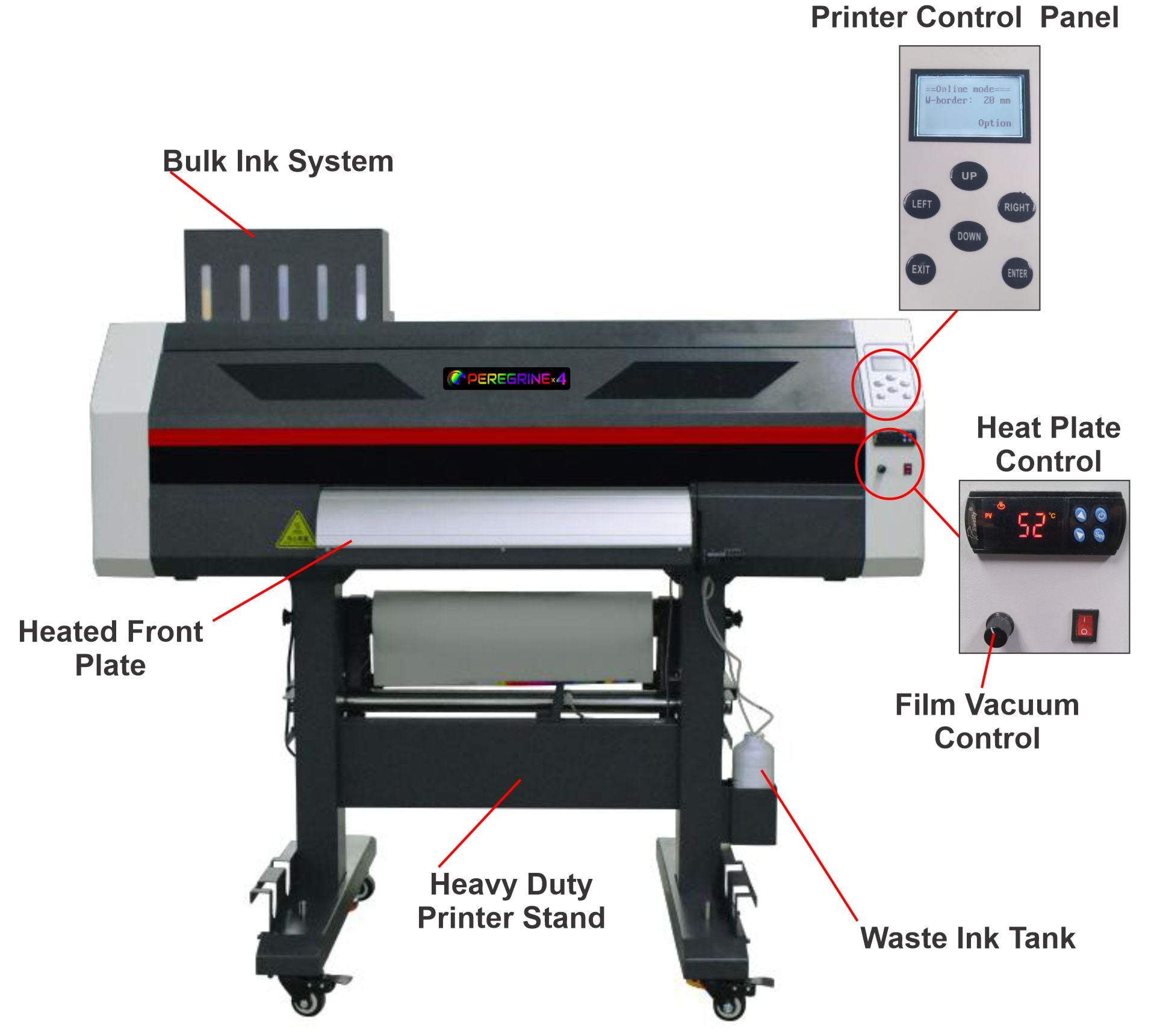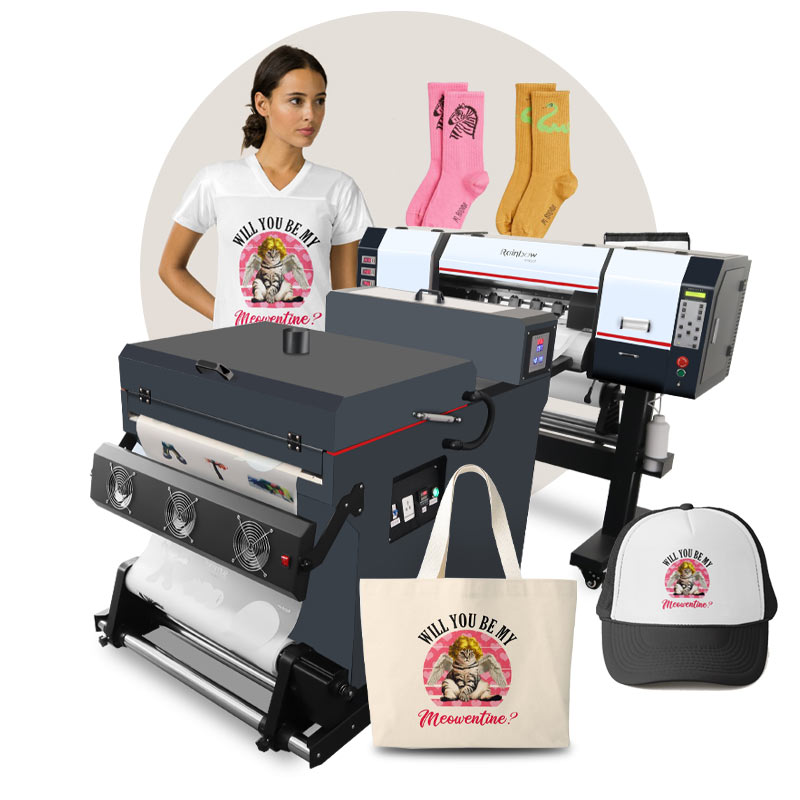A Deep Dive into DTF Printing: Methods, Benefits, and Industry Applications
A Deep Dive into DTF Printing: Methods, Benefits, and Industry Applications
Blog Article
Ultimate Guide to DTF Printing Methods for Spectacular Fabric Layouts
Embarking on the trip of understanding DTF printing techniques can open a world of possibilities for creating visually fascinating fabric styles. As the fabric sector remains to develop, remaining ahead of the contour with innovative printing approaches is important. In this overview, we will discover the intricate details of DTF printing, from grasping the fundamental essentials to unraveling advanced color methods that can raise your styles to brand-new heights. Keep tuned as we dig into the subtleties of selecting the ideal materials, developing the printing process, and conquering usual difficulties to attain sensational results.
Recognizing DTF Printing Basics
DTF printing, a procedure that entails transferring styles from a special film to textiles making use of heat and stress, creates the foundation of fabric printing strategies. This ingenious method enables premium, dynamic styles to be flawlessly transferred onto various materials with precision and information. The initial action in DTF printing entails developing or selecting a style that will be published onto the textile. This design is after that published onto an unique film using a DTF printer, which uses specific dyes or pigments to guarantee shade accuracy and toughness.
The final result is a stunning, resilient fabric layout that is washable, adaptable, and immune to fading. Overall, comprehending the essentials of DTF printing is important for grasping this contemporary textile printing technique.
Picking the Right Fabric Materials
Having established the fundamental principles of DTF printing techniques for textile styles, the next important factor to consider depends on selecting the ideal textile products to enhance this cutting-edge process successfully. The success of a DTF print mainly relies on the compatibility in between the chosen textile and the printing method. When choosing textile materials for DTF printing, it is vital to think about the textile's make-up, weave, and structure. Fabrics that work well with DTF printing consist of polyester blends, spandex, nylon, and other artificial materials. These textiles normally have a smooth surface area that permits for lively and in-depth prints. Additionally, the stretchability of these products can suit the warmth transfer process associated with DTF printing without misshaping the layout. It is a good idea to avoid natural fibers such as cotton or silk, as they may not generate the very same level of print clearness and sturdiness. By picking the ideal textile products, designers can optimize the possibility of DTF printing to develop durable and stunning fabric layouts.

Grasping the Printing Process
To master DTF printing methods for fabric styles, understanding the printing process is important for accomplishing premium and consistent outcomes. The printing process in DTF entails a number of key steps that need precision and focus to detail. Preparing the art work for printing is vital. This consists of making sure the layout is correctly sized and positioned for the fabric. Next off, the design is published onto an unique DTF film using a compatible printer with the best setups to achieve optimum color vibrancy and clearness (DTF Printing). When the design is printed, it is then moved onto the fabric using a heat press machine. The temperature level, pressure, and period of warmth application need to be very carefully controlled to guarantee correct adhesion of the style to the textile. In addition, mastering the peeling off procedure after warmth pressing is crucial to prevent any kind of damages to the style or textile. By developing each of these actions in the printing process, designers can regularly generate spectacular and durable fabric designs with DTF printing methods.
Enhancing Designs With Shade Techniques

Moreover, try out shade slopes can bring a feeling of motion and fluidness to the style. By blending colors effortlessly, a slope result can be attained, including a modern-day and vibrant touch to the fabric layout. In addition, utilizing color blocking methods can develop strong and striking visuals by comparing various solid colors in unique areas of the design.
Furthermore, integrating metal or neon shades can provide a special and appealing element to the textile layout, making it attract attention and emanate a sense of vibrancy. When strategically used, these color strategies can raise the overall visual charm of textile styles, making them much more captivating and unforgettable.
Troubleshooting Common DTF Printing Issues
After exploring numerous color strategies to enhance fabric designs, it is important to resolve common DTF printing concerns that may emerge throughout the production procedure. One typical issue is inadequate bond, which can arise from inappropriate healing temperature levels or times. To settle visit this web-site this trouble, make sure that the curing settings are accurate which the adhesive used is appropriate for the particular textile being published on. Another constant obstacle is color incongruities, where shades may show up differently than anticipated. This can be created by incorrect color profiles or setups in the printing software program. To tackle this, double-check the color setups and accounts to guarantee they match the intended design. Furthermore, problems with photo clarity and sharpness can happen because of low-resolution photos or inappropriate printing techniques. To address this, constantly make use of top notch photos and adjust the printing settings for optimum clarity. By being conscious of these usual issues and applying the required troubleshooting actions, you can improve the total top quality of your DTF published fabric designs.
Verdict
Finally, grasping DTF printing techniques is essential for creating magnificent fabric designs. By understanding the essentials of DTF printing, selecting the best materials, and enhancing layouts with color techniques, one can achieve excellent results. It is necessary to fix common issues that might occur throughout the printing process to ensure an effective result. With practice and focus to detail, one can develop lovely and distinct textile layouts using DTF printing strategies.
DTF printing, a procedure that involves moving layouts from a special movie to fabrics using warm and pressure, forms the structure of fabric printing techniques.Having established the fundamental principles of DTF printing methods for fabric designs, the next vital factor to consider lies in choosing the ideal fabric materials to match this ingenious procedure effectively. By choosing the ideal fabric materials, designers can make the most of the capacity of DTF printing to develop durable and stunning textile styles.
To stand out in DTF printing methods for fabric layouts, understanding the printing procedure is essential for achieving consistent and top notch results. DTF Printing. By developing each of these steps in the printing process, designers can constantly generate durable and spectacular fabric designs with DTF printing methods
Report this page